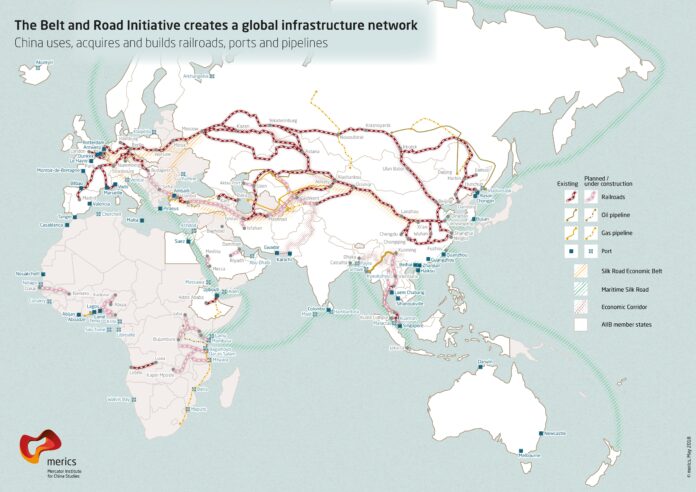Discoveries of large untapped mineral deposits in West Africa are behind Beijing’s push to invest heavily in exploration and mining. The first slot of this story by Stephen Chen of South China Morning Post, was published on these pages last week Thursday.
The Simandou iron deposit in Guinea, discovered as early as 1898 but only systematically explored in the 21st century, now holds an estimated 26.5 billion tonnes of iron ore with high iron content, positioning it as one of the world’s most significant undeveloped iron resources, according to Chen’s team.
Similar breakthroughs have occurred in copper and lithium. The Central African Copperbelt – stretching across the Democratic Republic of Congo and Zambia – has yielded some of the most spectacular copper discoveries of the new millennium.
The Kamoa-Kakula copper deposit in the DR Congo, co-owned by Ivanhoe Mines and Zijin Mining, is now recognised as the largest copper discovery of the 21st century, with combined reserves and resources exceeding 426 million tonnes of copper at high grades.
Chinese companies are expanding into West Africa after discovering large mineral deposits.
Meanwhile, lithium exploration in Central Africa has uncovered world-class hard-rock pegmatite deposits. The Manono lithium-tin project in the DR Congo contains an estimated 13.49 million tonnes of lithium oxide, potentially making it the world’s largest undeveloped hard-rock lithium resource.
In other parts of West Africa, discoveries have been equally transformative, according to Chen’s team.
Guinea, also known as the “aluminium capital of the world”, has seen its bauxite resources balloon to over 20 billion tonnes – accounting for nearly 94 per cent of Africa’s bauxite exploration increases since 2000. Major deposits such as Sangaredi, Boffa, and Labe have become central to global aluminium supply chains.
Gold exploration has also surged, especially in Burkina Faso, Mali and Ghana, where more than 290 gold deposits have seen significant resource upgrades since 2000, mainly of the orogenic type, hosted in the West African Craton.
The study concludes that gold, copper, iron, bauxite, nickel, uranium and lithium are the most critical minerals, with the greatest exploration advances occurring in Precambrian cratons – particularly the West African Craton, Congo Craton and Kalahari Craton.
The most promising deposit types include orogenic gold, sandstone-hosted copper-cobalt, lateritic bauxite and pegmatite-hosted lithium.
These scientific revelations have prompted Chinese mining and exploration firms to intensify their investment in West and Central Africa. Unlike earlier government-led infrastructure and aid projects, this mineral-driven expansion is rooted in commercial incentives and underpinned by cutting-edge geological research.
The main driver is not state-directed diplomacy, but rather China’s manufacturing base, which demands vast quantities of raw materials – from iron and bauxite to copper, cobalt and lithium – for its steel, aluminium, battery and electric vehicle industries.
As a result, the growth of Chinese presence in West Africa is larger in scale, more diversified in form and potentially more sustainable than previous state-led initiatives. It is increasingly driven by private-sector engagement, joint ventures and technical cooperation, rather than concessional loans or diplomatic agreements alone.
This shift poses a challenge to US and allied strategies, which have traditionally relied on diplomatic pressure, military influence and ideological competition to counter perceived Chinese encroachment. Such political tools may prove less effective in the face of a resource-driven, market-based expansion rooted in scientific and industrial imperatives.
Looking ahead, the authors proposed a “geology-go-first” strategy, a science-led, industry-driven approach that is less visible but potentially more enduring than past models.
Among the ongoing projects, China “should strengthen mineral exploration and development cooperation with West and Central Africa. In particular, cooperation in West Africa should focus on orogenic gold deposits in Burkina Faso, Mali, Ghana and [Ivory Coast], as well as lateritic bauxite and BIF-type iron deposits in Guinea,” Chen’s team said.
“In Central Africa, priority should be given to sandstone-hosted copper-cobalt deposits within the Central African Copperbelt.”
Stephen Chen is the SCMP’s science news editor. He investigates major research projects in China, a new power house of scientific and technological innovation, and their impact to humanity. Stephen has produced a large number of exclusive stories on China research, some highly controversial or shrouded in secrecy. He has been with the SCMP since 2006.



